
Roots
The very notion of hair care, for textured strands especially, carries whispers of ancient hearths and generational knowledge, a deep lineage etched into every curl and coil. It is a remembrance, a return to ancestral wisdom that recognizes the intrinsic connection between our heritage, the natural world, and the thriving vitality of our crowns. Our exploration delves into traditional care practices for textured hair that honor natural fermentation, a process seemingly simple yet rich with complex biological magic.
This is not merely an academic exercise; it is an act of soulful connection, a conscious unearthing of practices that sustained hair health and cultural identity across time and continents. We look to the Earth, to the bounty of plant life, and to the patient alchemy of microbial action, to truly understand the care our forebears bestowed upon their hair.
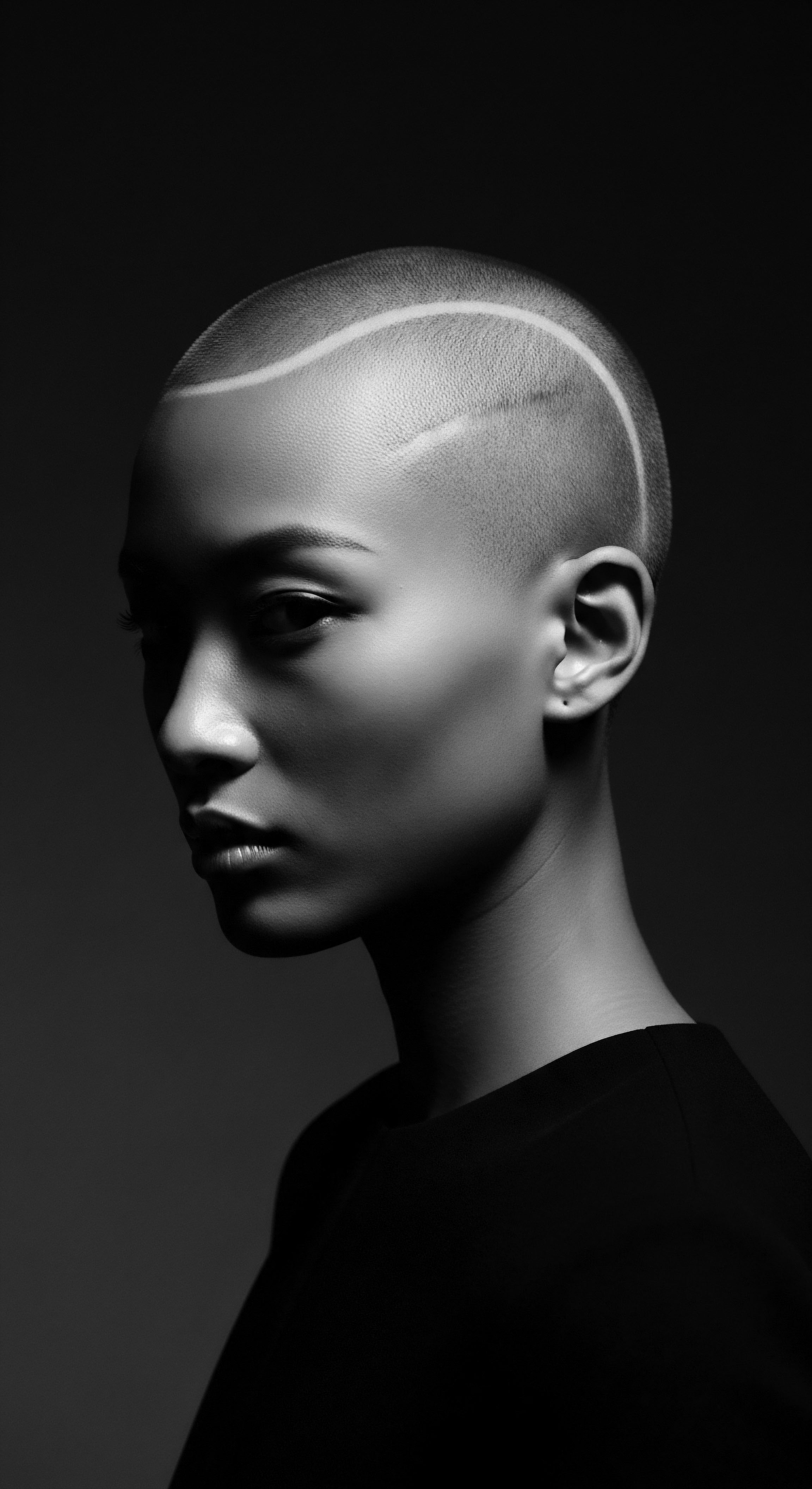
Textured Hair Anatomy and Ancestral Wisdom
The architecture of textured hair, with its unique helical structure, presents particular needs for moisture, strength, and protection. From the tightest coils to the most expansive waves, each strand carries a story, a genetic blueprint shaped over millennia. Ancestral communities understood these inherent characteristics with an intuitive precision. They recognized that hair, beyond its adornment, served as a conduit for spiritual connection, a marker of social standing, and a testament to familial lineage.
This understanding guided their care rituals, which often involved natural ingredients harvested from their immediate environments. Modern science, in its ongoing discoveries, often finds itself validating what these wise communities knew centuries ago ❉ the natural world held keys to profound health and beauty.
Consider the Hair Cuticle, the outermost protective layer, often lifted in textured hair due to its curved growth pattern. This characteristic allows moisture to escape more readily, rendering these strands prone to dryness. Ancestral practices instinctively countered this.
The concept of Fermentation, a biological conversion of compounds by microorganisms, quietly addressed these needs, transforming raw plant matter into more potent, bioavailable forms. These practices worked in concert with the hair’s very structure, providing not just superficial shine, but deeper, foundational sustenance.
Traditional textured hair care, often rooted in fermentation, mirrors an ancestral understanding of profound botanical alchemy.
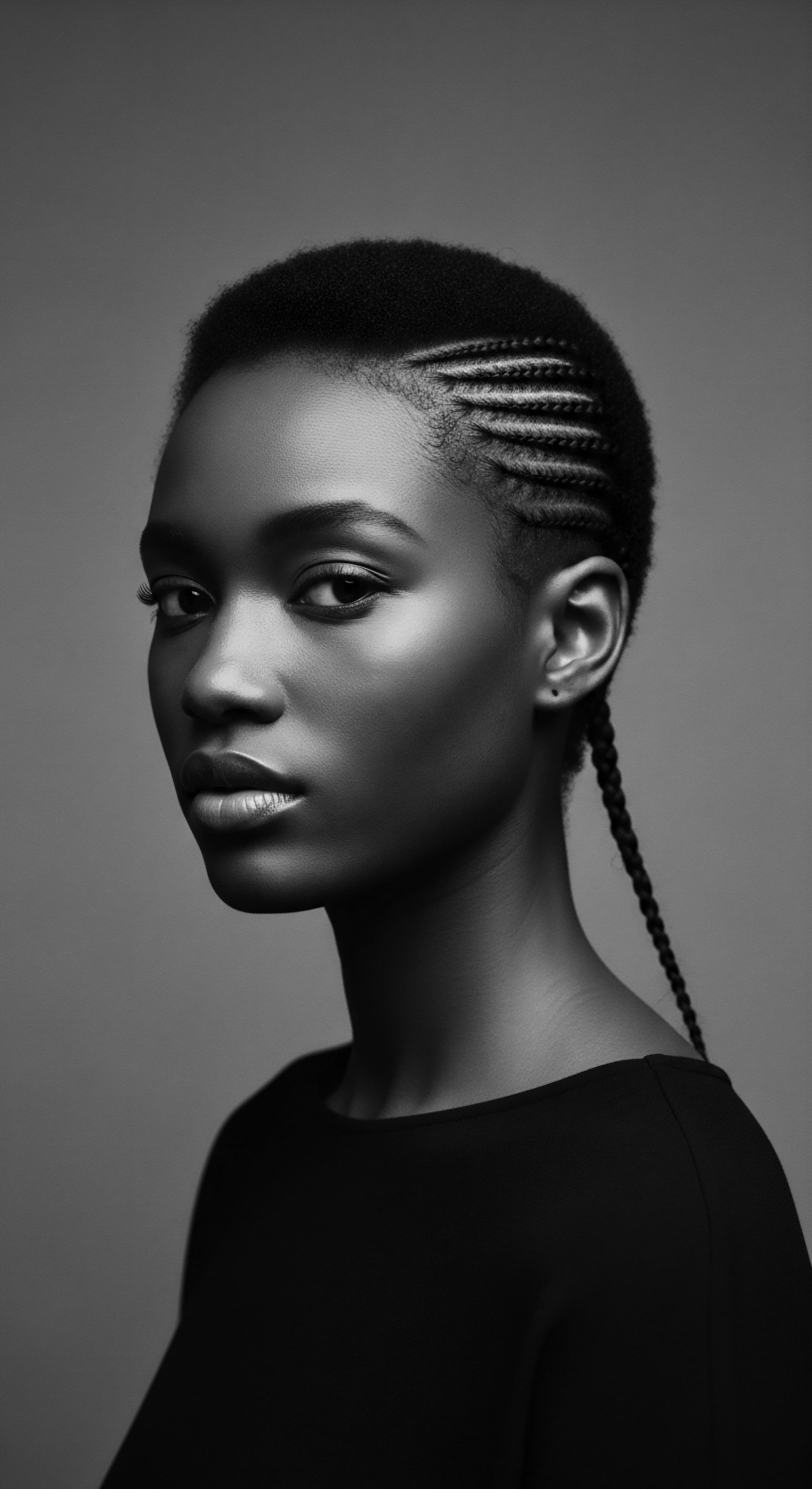
Traditional Hair Lexicon and Heritage Terms
The language used to describe textured hair and its care is as rich and varied as the hair itself. Across African and diasporic cultures, terms for hair types, styles, and care practices reflect a deep cultural attachment and respect. While modern classification systems often categorize hair by curl pattern (e.g.
4C, 3A), traditional societies possessed their own intricate nomenclatures, often tied to social roles, rites of passage, or spiritual beliefs. Understanding these terms offers a window into the heritage of textured hair care.
- Dudu-Osun ❉ A traditional Nigerian black soap, sometimes used for cleansing hair, its ingredients often undergo a natural saponification process that has elements of fermentation in its creation.
- Chebe ❉ From the Basara women of Chad, a powder made from a mixture of grains and herbs. While not explicitly fermented, its traditional application methods, often involving long-term saturation, create an environment for beneficial microbial activity.
- Shea Butter ❉ A West African staple, widely used to protect and moisturize hair, often processed through traditional methods that can involve stages of natural enzymatic breakdown.
These terms, passed down through generations, signify more than simple ingredients or techniques. They represent a collective memory, a shared wisdom that connects contemporary hair care practices to a long and unbroken chain of heritage. The use of these terms honors the ingenuity and resourcefulness of those who came before us, shaping our perception of hair as a sacred, living part of our identity.
| Ancestral Understanding Hair as a living entity connected to spirit and community; treated with natural, locally sourced elements. |
| Modern Scientific Link The scalp microbiome, the intricate ecosystem of beneficial bacteria, influences hair health and growth. |
| Ancestral Understanding Long-term application of plant-based pastes and rinses to strengthen and grow hair. |
| Modern Scientific Link Fermentation increases the bioavailability of nutrients like amino acids and vitamins, making them more absorbable by the hair shaft. |
| Ancestral Understanding Using specific concoctions for cleansing that leave hair feeling soft and resilient. |
| Modern Scientific Link The slightly acidic pH of many fermented rinses helps to smooth the hair cuticle, reducing tangling and increasing shine. |
| Ancestral Understanding The wisdom of heritage often laid the groundwork for contemporary scientific discovery regarding hair vitality. |
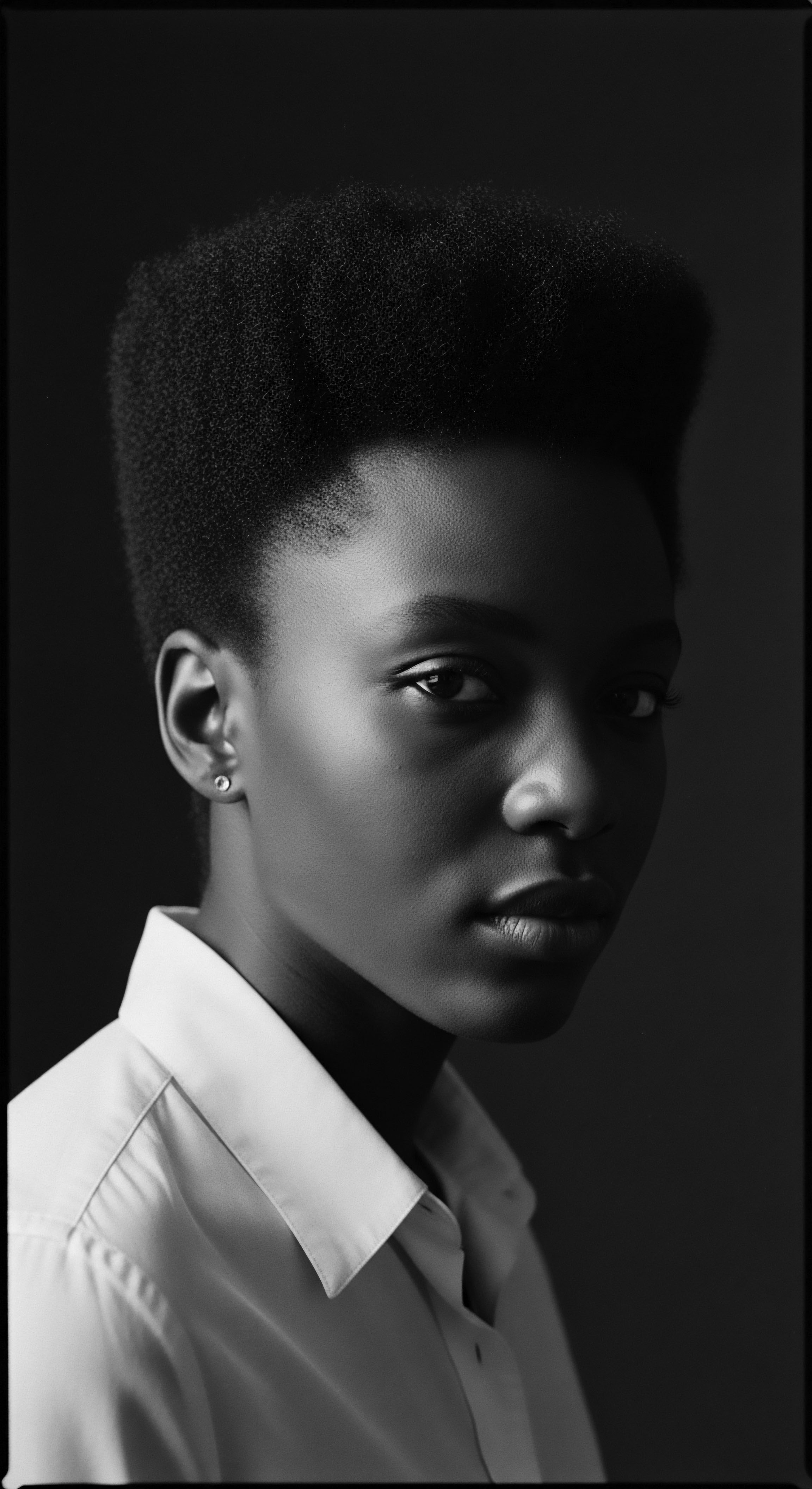
Ritual
The care of textured hair, especially practices that harness the quiet power of natural fermentation, has always been steeped in ritual. These were not casual acts but deliberate, mindful engagements with the self and the collective, reflecting a profound reverence for hair as a manifestation of heritage and identity. In many traditional contexts, the preparation and application of fermented concoctions formed part of a larger communal ceremony or a personal, meditative practice, binding individuals to their lineage and to the rhythms of nature.
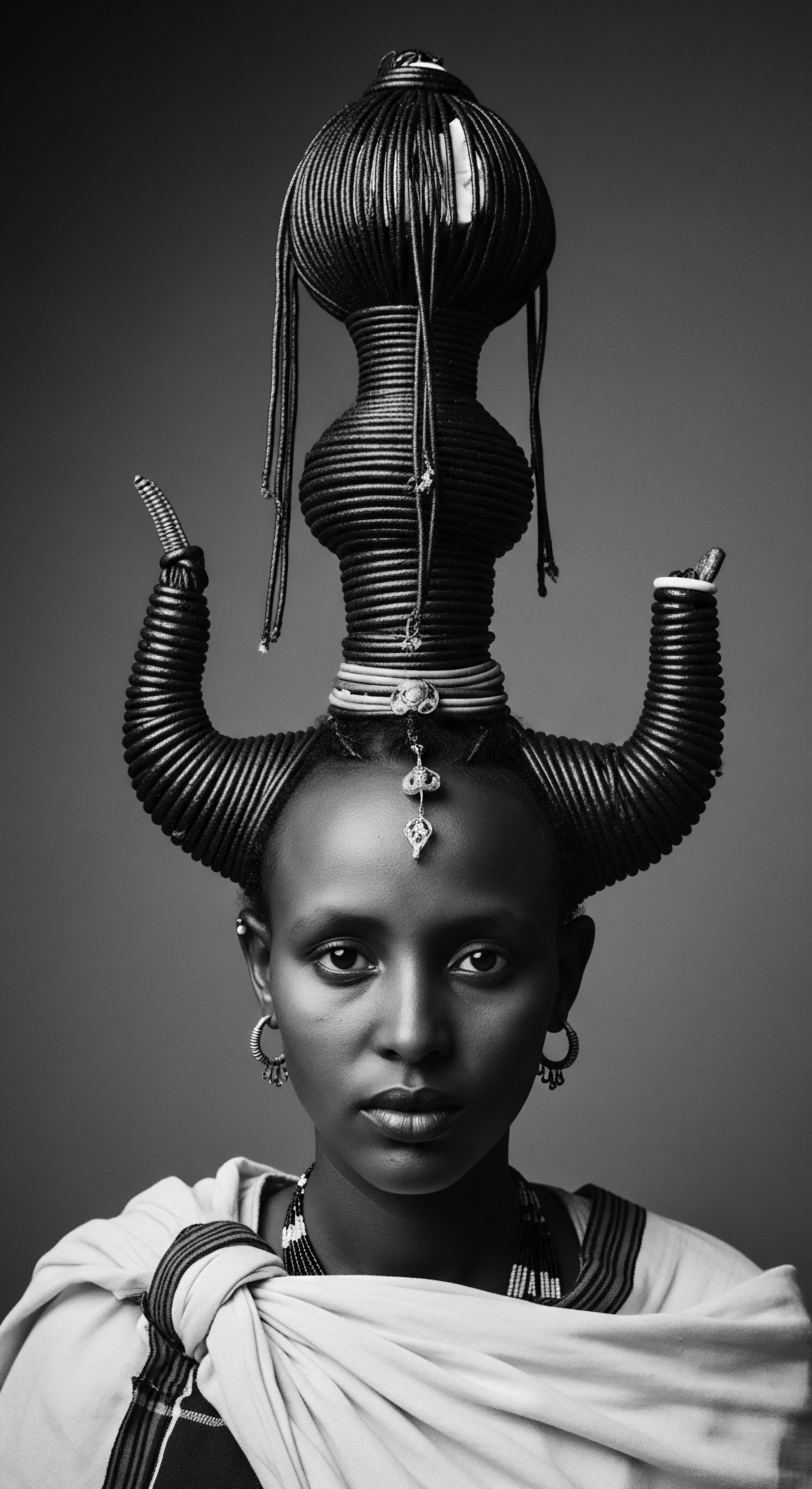
Fermentation in Traditional Styling Heritage
The application of fermented preparations extended beyond mere conditioning; it played a role in the very architecture of hair styling, especially protective styles. Consider the meticulous braiding and twisting prevalent across African and diasporic cultures, styles designed not only for aesthetic appeal but also for hair preservation. Fermented ingredients, often used as pre-treatments or rinses, improved the hair’s malleability and resilience, making it easier to manipulate into these intricate, long-lasting forms. The very act of preparing these agents – the soaking of grains, the patient waiting for the microbial magic to unfold – became a precursor to the styling ritual itself.
For instance, the use of fermented milk butter in East Africa, described by @tanita.dee, kept hair soft and shiny. This suppleness would undoubtedly have aided in detangling and styling, allowing for the creation of elaborate forms without causing undo stress to the hair shaft. Similarly, the properties of fermented rice water, known to reduce friction and increase elasticity, would have made hair more amenable to the tight, protective braiding patterns characteristic of many African hairstyles. This functional aspect of fermentation highlights its interwoven place within styling heritage.
Fermented elements historically prepared textured hair for the elaborate, protective styles that symbolize cultural identity.

Protective Styling Ancestry
Protective styles stand as monuments to ingenuity and resilience, carrying ancestral echoes through every plait and twist. These styles, which tuck away fragile ends and minimize daily manipulation, have been a cornerstone of textured hair care for centuries. They represent a practical and symbolic protective measure, often enhanced by the conditioning effects of fermented ingredients.
The Yao Women of Huangluo Village in China, renowned for their strikingly long hair, offer a powerful case study. Their secret lies in bathing their hair with Fermented Rice Water, a practice stretching back to the Heian period (794 to 1185 CE) in Japan. This is not a casual rinse but a deeply ingrained cultural ritual. The fermentation process, often involving rice, water, and herbs, enriches the water with amino acids, vitamins B, C, E, and antioxidants.
These enhanced nutrients contribute to hair strength, reduced breakage, and remarkable length retention, allowing the women to maintain hair averaging six feet long, which retains its color into their eighties. The ritual of preparing and applying this fermented elixir is central to their hair’s vitality and their cultural identity. This historical example showcases a direct link between a fermented practice, the ability to grow and maintain extremely long hair, and a distinct cultural heritage.
Traditional braiding techniques, too, found allies in these preparations. The application of nourishing fermented oils or rinses before braiding would have softened the strands, making them less prone to breakage during manipulation and offering sustained conditioning while the hair was in a protective state. The legacy of these practices lives in the resilience of textured hair, a resilience cultivated not only through physical care but through the deep-seated wisdom of the communities that practiced it.
- Fermented Rice Water ❉ Cultivated particularly in Asian traditions, the Yao women’s consistent application demonstrates its role in length retention and hair strength.
- Fermented Milk Butter ❉ Used in parts of East Africa, this ingredient provided softness and shine, facilitating easier styling and manipulation.
- Plant-Based Ferments ❉ Various botanical extracts, transformed by microorganisms, could have been used to enhance hair’s pliability for traditional threading and wrapping styles.
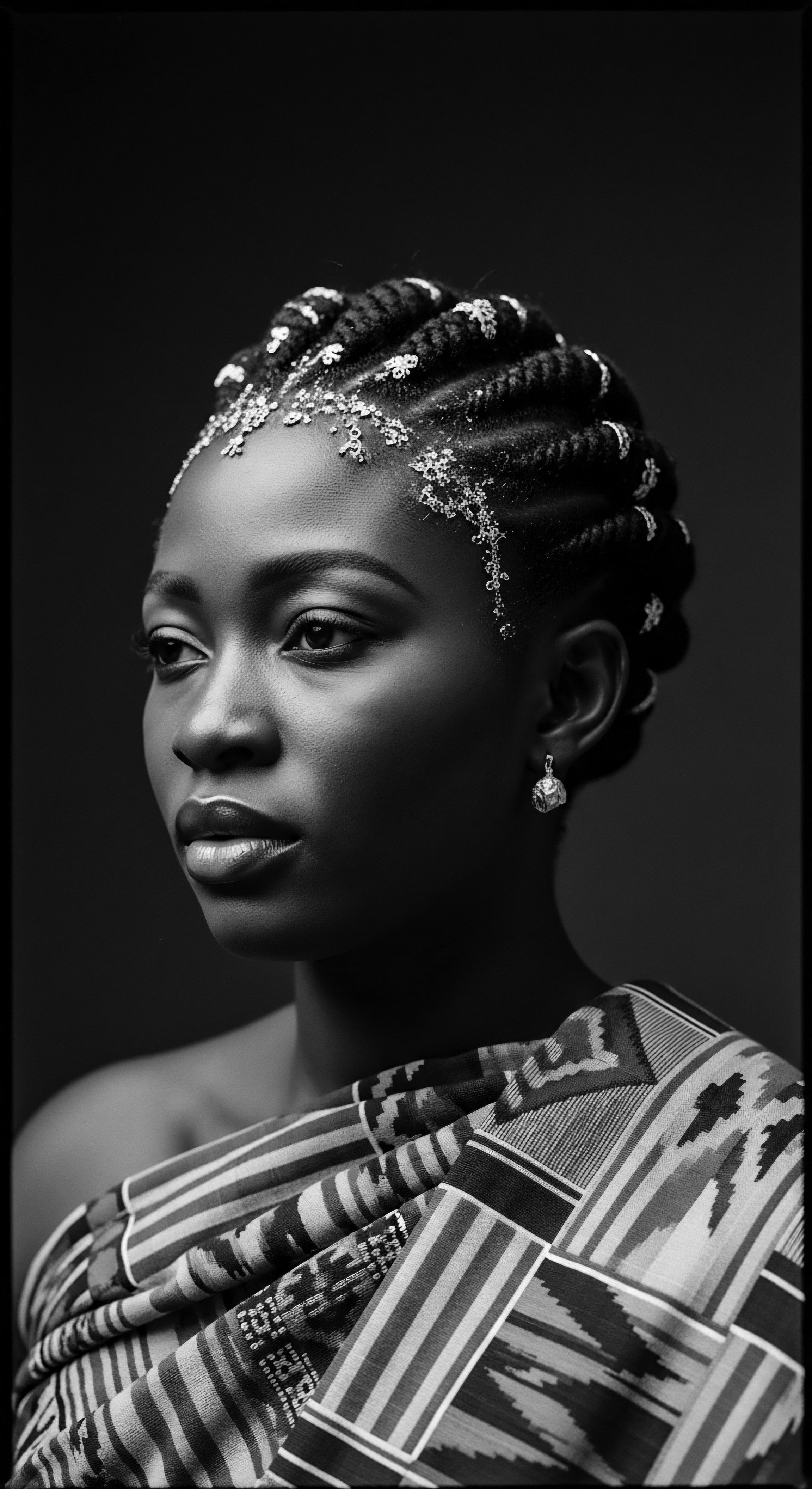
Traditional Tools and Fermentation
The tools of hair care, simple as they often were, worked in concert with the ingredients. Wooden combs, bone picks, and natural fibers were not merely instruments; they were extensions of the hands that prepared and applied the fermented elixirs. The smooth surface of a polished wooden comb would glide more easily through hair softened by a fermented rinse, minimizing snagging and breakage. In societies where hair was often adorned with beads, shells, or clay, the integrity of the hair shaft, bolstered by nutrient-rich ferments, was paramount for these styles to endure.
| Traditional Styling Tool/Technique Hand-Braiding and Twisting ❉ Intricate patterns that protect and organize hair. |
| Role of Fermented Ingredients Fermented rinses increase hair elasticity and pliability, making it more manageable for these detailed manipulations. |
| Traditional Styling Tool/Technique Protective Wraps and Headscarves ❉ Covering hair to retain moisture and shield from elements. |
| Role of Fermented Ingredients Fermented oil treatments would be applied before wrapping, to seal in moisture and provide long-lasting conditioning. |
| Traditional Styling Tool/Technique Natural Combs and Picks ❉ Crafted from wood or bone for detangling and styling. |
| Role of Fermented Ingredients Hair softened and detangled by fermented rinses would allow these tools to glide through more effectively, reducing damage. |
| Traditional Styling Tool/Technique Fermentation was not an isolated practice; it was deeply interwoven with the physical acts of hair artistry and maintenance. |

Relay
The knowledge of traditional fermented hair care practices represents a living inheritance, a relay race of wisdom passed through generations. This understanding bypasses superficial beauty trends, grounding us in deeply meaningful connections between elemental biology, ancestral practices, and the profound heritage of textured hair. It invites us to consider how these ancient methods, often validated by contemporary science, offer pathways to holistic well-being and a stronger sense of self. The complexity of these practices speaks to a scientific intuition present long before laboratories and microscopes.

Holistic Care and Ancestral Principles?
Holistic well-being, a concept often lauded in modern wellness circles, finds its truest expression in the ancestral practices of textured hair care. These traditions did not isolate hair from the body, mind, or spirit. Instead, hair health was seen as a reflection of internal balance, environmental harmony, and spiritual alignment.
Practices involving fermentation fit seamlessly into this philosophy. The microorganisms that drive fermentation – yeasts, lactic acid bacteria, acetic bacteria – are themselves ancient allies in human health, both internally and externally.
Consider how these practices were often communal. The act of cleansing, oiling, and styling hair could be a moment of shared storytelling, a space where younger generations learned from elders, absorbing not just techniques but the ethos of care and connection. The application of a naturally fermented hair rinse was therefore more than a cosmetic step; it was a ritual of kinship, a bond solidified through touch and shared heritage. This communal aspect underscores the deep integration of hair care into the social fabric, far removed from solitary, product-driven routines.
The natural acidity of fermented liquids, such as fermented rice water, helps to balance the scalp’s pH, which is crucial for a healthy microbiome and overall hair vitality. This scientific understanding, now articulated with precision, was embodied intuitively in the ancestral methods. Such practices reflect a comprehensive approach to health, where external care complements internal equilibrium.

Fermentation Science and Traditional Efficacy?
The efficacy of traditional fermented ingredients for textured hair care can be understood through the lens of modern microbiology and biochemistry. Fermentation transforms raw materials in remarkable ways, unlocking or enhancing beneficial compounds.
- Nutrient Amplification ❉ During fermentation, microorganisms break down complex molecules into simpler, more bioavailable forms. This means that proteins are broken into amino acids, and starches into simpler sugars, making them easier for the hair shaft and scalp to absorb.
- Increased Antioxidant Levels ❉ The fermentation process can significantly boost the concentration of antioxidants, such as ferulic acid and oryzanol in rice water, offering enhanced protection against environmental stressors and supporting hair health.
- PH Balancing Properties ❉ Many fermented rinses possess a naturally acidic pH (around 5.5-6.0), which closely matches the hair’s natural pH. This acidity helps to smooth and flatten the hair cuticle, leading to reduced frizz, increased shine, and less tangling.
- Probiotic Content ❉ Certain fermented ingredients, particularly those involving lactic acid bacteria, introduce beneficial microbes. These can contribute to a balanced scalp microbiome, which helps to soothe irritation, address concerns like dandruff, and promote healthy hair growth.
A scholarly review by Saini et al. (2020) on the ethnobotanical and pharmacological significance of plants with anti-hair fall and hair growth activities highlights the traditional use of various botanical extracts. While direct mention of fermentation may not be universal, the preparation methods often involve soaking or aging, which could inadvertently promote beneficial microbial transformations, thus validating the long-held beliefs in their efficacy for hair health (Saini et al.
2020). This provides a more rigorous backing to the anecdotal evidence, connecting ancient wisdom with contemporary scientific inquiry into complex formulations.

Nighttime Rituals and Preserving Heritage
Nighttime care for textured hair has always been a critical component of its preservation, a practice deeply intertwined with heritage. The vulnerability of textured hair to dryness and friction, especially during sleep, necessitated protective measures. These rituals, often simple yet profoundly effective, gain additional layers of benefit when coupled with the principles of fermentation.
The use of headscarves and bonnets, for instance, a common practice across the African diaspora, shielded hair from moisture loss and breakage against harsh bedding fabrics. Prior to covering the hair, traditional oils, some of which may have been fermented or contained fermented components, would be applied. This layering of protection and targeted nourishment underscored a comprehensive approach to maintaining hair integrity. The fermented oils, with their enhanced bioavailability, would have continued to work their restorative effects throughout the night, penetrating the hair shaft and nourishing the scalp as the individual rested.
This thoughtful nightly regimen speaks to an understanding of sustained care, a silent dialogue between hair and its protector that spanned generations. It is a legacy of intentionality, where every element of the care routine contributed to the long-term health and vitality of the hair.

Reflection
To journey through the traditional care practices for textured hair that honor natural fermentation is to trace a living line back through time, connecting us to a vast, intricate heritage. This is not merely about finding a new product; it is about recognizing the soulful wisdom embedded within every strand, a wisdom nurtured by generations. The practices of fermentation, in their quiet biological poetry, remind us that true care extends beyond the superficial. It asks for patience, observation, and a profound respect for the natural cycles of growth and transformation.
Our forebears, through their intuitive understanding and deep connection to the Earth, practiced a science of hair care that modern research is only now beginning to fully comprehend. They knew the secrets held within rice, within milk, within the plants of their lands, and how microbial allies could unlock those secrets, rendering them more potent, more beneficial. This rich tapestry of knowledge, passed down through whispers and hands-on guidance, forms the very Soul of a Strand, a heritage of resilience, beauty, and unwavering self-acceptance. As we look to the future of textured hair care, we find its most luminous path often leads back to these elemental truths, to the enduring legacy of our ancestors, and to the quiet, powerful magic of natural fermentation.

References
- Saini, K. Rani, S. Devi, P. & Saxena, A. (2020). Ethnobotanical and Pharmacological Importance of the Herbal Plants With Anti-Hair Fall and Hair Growth Activities. ResearchGate .
- Al-Saeed, R. H. & Al-Amrani, S. H. (2023). A Journey Through Black Hair Care ❉ From Traditional Practices to Modern Innovations. Digital Creator @tanita.dee .
- Clinikally. (2024). Embracing the Wonders of Fermented Oils in Hair Care. Clinikally .
- Chebeauty. (2023). Fermented Rice Water ❉ A Natural Hair Care Miracle. Chebeauty Blog .
- Limoneira. (2021). Fermented Rice Water & Pummelo for Hair. Limoneira .
- Medically reviewed by Cynthia Cobb, DNP, APRN, WHNP-BC, FAANP — Written by Lana Burgess. (2024). Rice Water for Hair ❉ Benefits and How to Use It. Medical News Today .
- WhatNaturalsLove.com. (2020). History of Rice Water For Hair – Rapunzel’s Secret? WhatNaturalsLove.com .
- Clinikally. (2024). Exploring the Wonders of Fermented Rice Water for Hair Vitality. Clinikally .
- NewBeauty. (2025). Why Fermentation Is the Next Big Thing in Hair Care. NewBeauty .
- Afro Gist Media. (2017). How To Grow Long Healthy Hair ❉ 10 Ancient Secrets Africans Swear By. Afro Gist Media .
